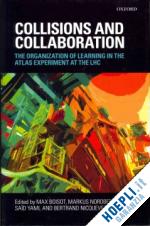Max Boisot was Professor at ESADE in Barcelona, Associate Fellow at the Saïd Business School, Oxford University, and Senior Research Fellow at the Snider Center for Entrepreneurial Research, The Wharton School, the University of Pennsylvania. Between 1984 and 1989 he was Dean and Director of the China-Europe Management Program in Beijing. This has since evolved into the China-Europe International Business School (CEIBS) in Shanghai. Max Boisot has published in Administrative Science Quarterly, Organization Science, Research Policy, and The Journal of Evolutionary Economics. His book, Knowledge Assets: Securing Competitive Advantage in the Information Economy (Oxford University Press, 1998) was awarded the Ansoff Prize for the best book on strategy in 2000. Dr Markus Nordberg is the Resources Coordinator of the ATLAS project at CERN, Switzerland, where his responsibilities include budget planning and resources allocation for the ATLAS project. He has also served as Visiting Senior Research Fellow at the Centrum voor Bedrijfseconomie, Faculty ESP-Solvay Business School, University of Brussels, and as a member of the Academy of Management, Strategic Management Society and the Association of Finnish Parliament Members and Scientists, TUTKAS. He has a degree both in Physics and in Business Administration. Saïd Yami is associate Professor at the University of Montpellier 1 and Professor at EUROMED Management (France) in Strategic Management. He has published many research articles and several books. His main research relates to competitive relationships through the topics of rivalry and disruptive strategies, collective strategies, and coopetition. He also develops research on entrepreneurship and strategy in high-tech industries. His main field of analysis is the knowledge-based economy. Among his more recent publications is Coopetition: Winning Strategies for the 21st Century (edited by Yami S, Castaldo S., Le Roy F., and Dagnino G.B. Elgar 2010). Bertrand Nicquevert is a Project Engineer at CERN. Within the ATLAS collaboration, he held various positions: as a member of the technical coordination, he was in charge of the geometrical integration he led the technical design office, he was the project leader of the main ATLAS structure and the coordinator of various zones, such as the so-called shielding disc. He then joined the Large Hadron Collider installation coordination, and worked on the design of the next generation of linear colliders. He is now work package holder for the integration and design of the MedAustron project for oncological hadrontherapy. In addition to his function of engineer, Bertrand Nicquevert has taken part of various research programs, in the field of history and sociology of science (with Peter Galison from Harvard University), and of design research, mainly in close collaboration with the Grenoble University.












